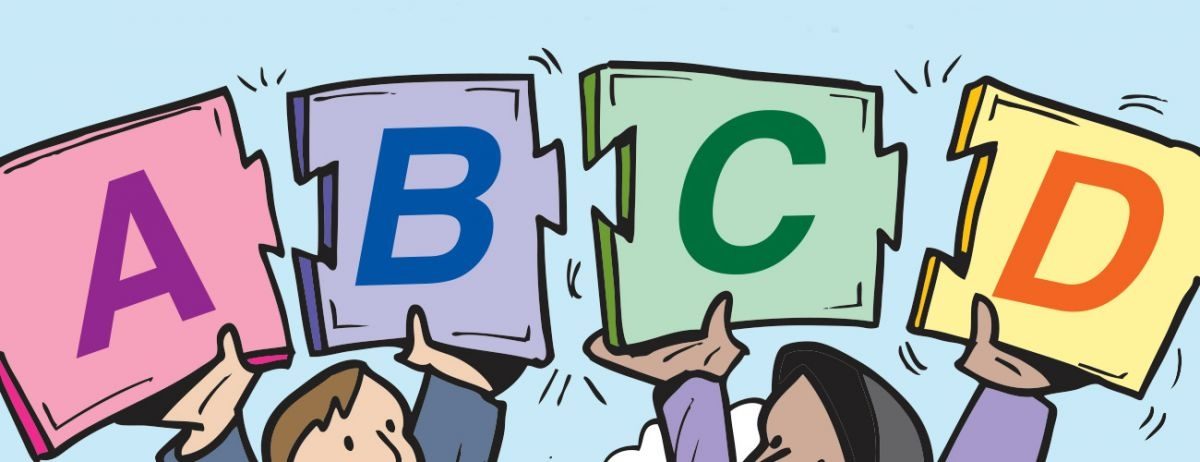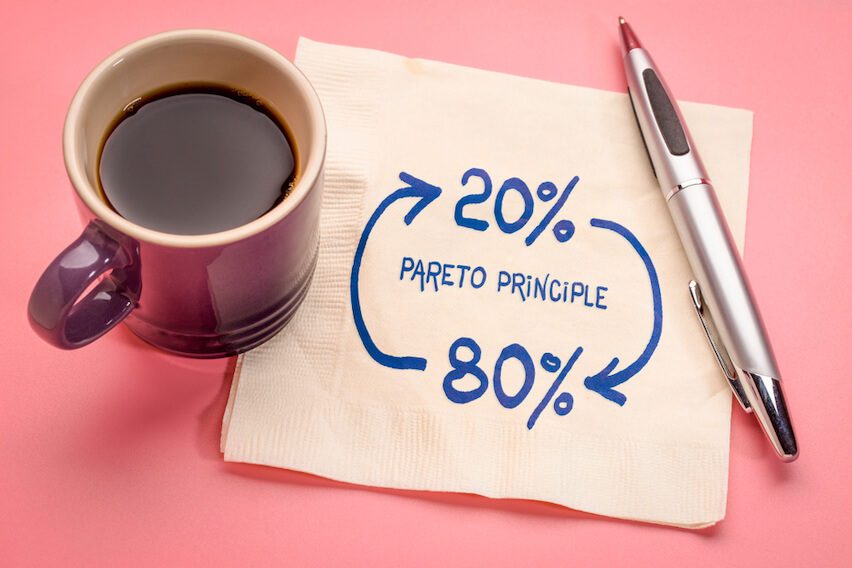Learn Your A, B, C's & Sell Your D's!
Classifying your customers could make a real difference to your business. It could be the difference that means you won't spend every waking hour at work thinking about it! It could literally improve quality of life for you and your team.
You see, we all have customers we just don't like to deal with. Well, why do it? Those customers who give us grief, never pay on time, complain consistently, or are generally unfriendly and uncooperative really don't have to be a part of our lives.
This information is designed to give you insight into what classifying your customers means, why it's important, and how to do it successfully.
Classify and fire!

There's only one way to describe this—an absolute MUST.
Chances are, you have a client list (literally a list or database of your customers and their details) that gives you a warm glow every time you look at the numbers because this base is the foundation of your business. Perhaps you have a hard copy of the list, or you do a computer merge and it comes up to a number in the hundreds or thousands. But that warm glow could be false confidence. That is, if you haven't ruthlessly culled the "inactive‟ customers from your list.
The first step, then, is to define your customers or clients into A, B, C, and D groupings. First, lets define an A client. In essence, an A client might be someone who:
- Loves what you do.
- Pays for it on time (if not ahead of time).
- Wants a good quality product or service.
- Is friendly to you and your team members.
- Understands the value of creating something of value or taking care of their needs.
- Buys from you regularly, that is, they're active.
- Understands the importance of their purchase and therefore appreciates your reputation.
- Gives you work you love doing.
- Has significant potential to grow.
- You enjoy working with.
- Refers other A clients to you.
- Let‟s you add value in lots of ways.
B clients might be those who are deficient in one or more of these characteristics. Perhaps they don't buy as regularly, but they have the potential to become an A. C clients are the same, only to a greater degree. They spend within a minimum range and have very little potential for further development. Finally, D clients are people you simply don't want to work with anymore.
As such, it becomes important to track your customers activities. If you aren't doing this already, you can begin this process by classifying your customers and tracking their activities from there.
Each client needs to have a profile on computer, hard copy customer record, or card, where relevant information can be stored, including the specific information about their dealings with you.

Information such as special requirements, technical records, the total dollars spent to date, amount spent per contact, averages, and so on can then be recorded in one place. This will help keep a very tight track of each client's spending pattern. It's on this record that you register them by their rating—A, B, or C.
When you have those classifications, you have to start doing different things with those groups—and those different things may start with ridding yourself of at least your D clients (if not the C clients, too).
There are lots of reasons WHY you have to do this. You see...
- D clients are usually the ones who complain the most and pay the least.
- They are often focused on price and discounts.
- They are almost inactive, only purchasing from you irregularly.
- They are usually the ones who can be dealt with far more effectively by people other than yourself.
- They do not value what you do. Therefore, it‟s incredibly difficult to add value.
- They cause you stress.
- You do not enjoy dealing with them. (Please think about this: You do not HAVE to deal with them. Right now you're making a choice to do it. It‟s a choice you don‟t like, so don‟t deal with them.)
And what‟s the biggest reason of all?
- They take valuable time that could be so much better used elsewhere. They are like an anchor holding you and your team down.
As one person put it, “The D's are sucking the AWESOMENESS out of me!”
It's simply that D clients don't fit the profile of people you want to deal with from now on.
Pareto’s Principle: 80/20 Rule

Now before you say, "No way, we just couldn't afford to do that!!" consider another issue, something called Pareto's Principle.
This suggests that 20% of your customers provide you with 80% of your income. The other 80% of your customers provide you with only 20% of your income.
It is, however, the customers who represent this 20% of your income, who take up 80% of your team's valuable time! And it's the 80% that are your C's, D's, and possibly B's.
As such, it simply isn't worth working with them. Financially, the rewards to the business from these groups are limited, and valuable resources are constantly tied up for little or no return.
If you were to work through your customer list, you'll probably find this to be the case. Think about those customers who spend the most with you and calculate the income from that group. Compare that, then to the rest. When you do that, you'll probably find it's something close to the 80/20 Rule.
Let's look at this in more detail.
Some business owners get frustrated with this kind of talk. Some tend to think people buy "on price.‟
An example of just such a case comes from a business in the petroleum industry. The business owner felt that in a climate of price cutting, what hope did he have of achieving his fair margin and providing that level of superior service he wanted to give?
It was suggested that he segment his customer list and then analyse the proportion of A's, B's, and C's. (He defined A clients as those who simply call up and say, “Can you put 10,000 gallons in the bottom paddock by tomorrow morning?”)
As it turned out, a full 61% of his sales came from his A clients! 24% came from his B's and 15% from his C's. Most of his business comes from his A clients.
The business owner discovered something very interesting. Those A customers were more interested in service and dependability than price. It's the sort of thing we all miss when we're too close to what we do.
He realised that his focus and that of his team had been preoccupied at the price
shopper end, that he COULD put more energy into serving the A's at a higher service
level without being paranoid about price.
He went on to find out what "makes‟ an A client. With that vital insight, he could then articulate how he services this market and articulate a Unique Core Differentiator. In doing so, he may have been able to upgrade some B's to A's and find even more A's out in the marketplace who were looking for more service.
As you can see, segmenting your clients is pivotal to building a profitable business.
So, how do you move them out of your customer base?
Here, you have two options (or more if you can think of them!)
First, you could develop a system to pass work to others who are more willing to work with that kind of customer. Your competitors will normally be happy to accept your leads.
In fact, you could sell those leads to them. Often competitors are willing to pay you a fee for each one. That way, you can earn some added income to boot and they win a new customer.
(They'll think like most business owners—any customer is a good customer. Understanding this is not the case will make you more profitable because you'll have more time to deal with those customers who are more important to your business.)
To explain this to your customers, you could say something like this:
"[Customer Name], we've been looking at the work we do with you and we feel that [other business name] could help you better with your needs. You see, we're moving away from offering this [product/service]. I've really examined it closely, and I'm convinced that [other business name's team] can help you get the [help/product/level of support/service] you really need.
In fact, I've talked with them already. They're sure they can help and they're looking forward to talking with you. Their rates are similar to ones you're used to, and they're happy to offer you an account and help out. Now that you've called, I'll talk with them and ask them to call you later today. What time would suit you best?"
Second, you could simply fire your client. Here's an alternative script as an example. (Of course, this sounds very harsh, but some would argue that it's the only way to go.)
"John, it's important that we talk about how we're working with each other, and how well my range of [product/services] match what you want. Clearly, if there's no match, then I'm not serving you well.
My feeling is that the match doesn't exist. In our practice, we want to work principally where we can make a real contribution to our clients [health/home/family/supply/appearance/business/life], instead of simply doing the basics.
It means we're going to reduce the number of clients we deal with, yet increase the services we provide for them. That means, too, that our fees are increasing—in fact, the typical client we're working with now is investing over [dollar200/dollar2,000/dollar20,000] with us each year. Clearly, they're doing that because of the value we're giving them in return.
Again, my feeling is that (unless I'm very mistaken) we simply can't provide you with that value. How do you feel about that?"
Let's say it again. When we say, get rid of the D's, we really mean, get rid of the D's from YOUR workload.
Go ahead and classify your clients now. You'll be amazed at the insights this gives you.
A management tool

Taking that one step further, you then use those classifications to manage your customers and your marketing to those customers.
You see, most businesses promote to every customer and potential customer as if they were the same. Needless to say, this is expensive because very often the marketing that would suit an A client would fall on completely deaf ears with a D client.
The classification process you've just been through would show you that your A clients deserve (and probably already receive) completely different attention levels than your D (soon to be gone) clients.
Your B clients, on the other hand, have the potential to become A clients. So it's important here to nurture them, contact them regularly, and send them special information. Offer them privileges your A clients enjoy by explaining what that entails and lead them into becoming A clients.
Your A clients would need to receive regular contact, and a great deal of your energies would need to be focused on delivering fantastic service. In fact, we really should add something else to the title of this segment: “Define your A, B, C, and D clients... and then love your A’s to death!”
The ‘mad dentist’ gives us a lesson (an example for you)
A perfect example of just how well this strategy works is the referral system that dentist Paddi Lund has used to change his mediocre dental business to a place where people love to come.
One of Paddi's primary goals was to create a "happiness-filled‟ working environment. Paddi's theory:
“In general, people spend about 8 hours of each weekday at work, and much of the time they don't enjoy themselves. Like myself, people put up with this situation so that they can earn some money. In the small amount of leisure and vacation time that they have, they take the money to buy things to try to make themselves happy.”
Paddi decided that there had to be a better way. Since happiness was Paddi's goal, he decided he didn't need to continue to work with customers who didn't bring him any happiness in his business.
So he decided to split his clients into A, B, C, and D groups.
From there he decided to fire his D clients—he referred them to another dentist (never to be seen again!) Suddenly he realised his C clients had now become his D clients, so he fired them as well. And followed the same pattern with his B clients.
Consequently, he was left with only around 30% of his former client base. The 30% who were always on time, always paid promptly, and were just a pleasure to deal with generally. And he loved it!
At the same, time his team was concentrating on serving their A clients with extraordinary care. As part of a working agreement with their clients, they also began to ask for referrals.
The outcome of all of these somewhat "radical‟ and certainly unorthodox changes is a practice that gradually moved from a client base of 20% A clients to a base of 100% A clients.
Not a bad result!
Paddi and the team really began to enjoy their work. The customers benefited from so much personal attention that they were happier, spent more, and referred more people. The team felt better and happier, too.
Not only that, Paddi and his team have been very successful in generating "word of mouth‟ referrals from these A clients by very carefully selecting the clients they ask for referrals.
In fact, this dental practice is strictly "invitation only.‟ Paddi and his team have many internal systems in place to ensure that their customers are delighted. Clients are thrilled to have the opportunity to refer a friend.
The entire referral process is done with a great deal of ceremony, which adds to the clients feeling of being "privileged‟ to be selected to refer a friend. The referring client is given a set number of specially printed business cards (in a beautifully engraved gold business card holder) and knows that whomever they refer should be "just like them.‟ Human nature being what it is, Paddi's clients are very selective about who they refer to the practice.
The end result for Paddi Lund is that he now works a 22-hour week (as opposed to the 60 hours he was regularly putting in). He and his team now earn approximately 3 times the average dental income, and they have a completely stress-free and fun working environment!
If you're an ambitious business owner looking to boost your current results or if you're looking to get your business off to a flying start we invite you to contact us today. You can expect practical business, tax, marketing and financial advice that could have a profound effect on your future business profits. To book your FREE, one hour introductory consultation simply call us on (03) 9326 1244 or complete your details in the box at the top of this page and we will be in touch.














